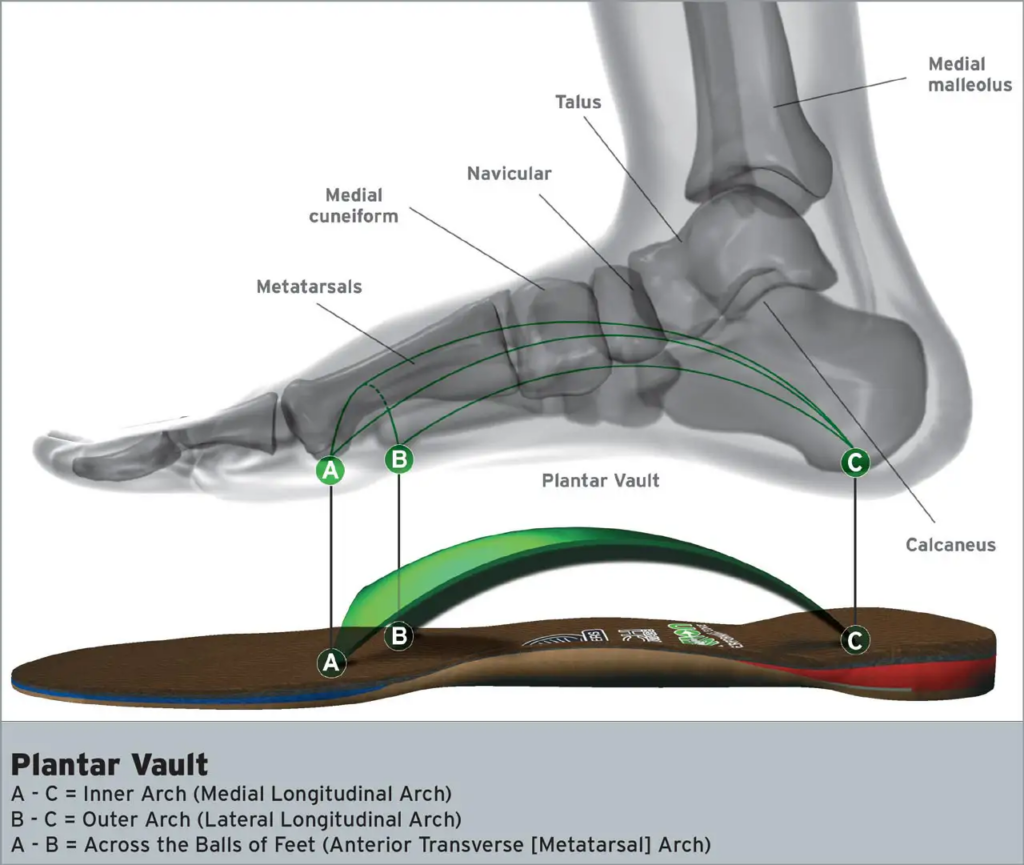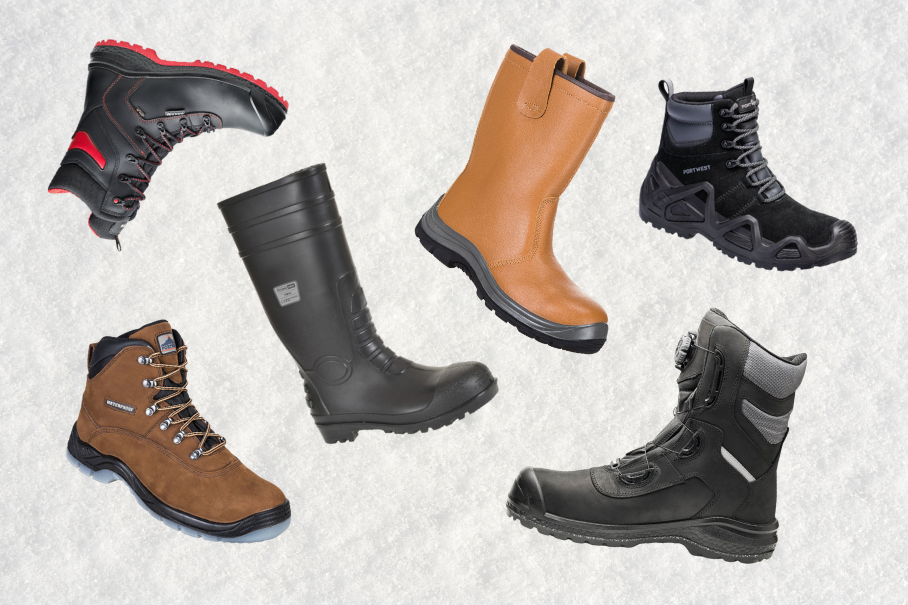When it comes to facing the harsh conditions of cold weather, finding the best work boots for winter is essential to keep your feet protected, dry, and comfortable. Whether you’re working on icy job sites or navigating through slush and snow, the right pair of work safety boots can make all the difference.
This guide will cover the key features to look for in winter work boots, from waterproofing and insulation to slip-resistant soles and durability. Plus, we’ll explore specific options for custom workwear by Clothes2order to ensure you have boots tailored to the specific demands of your role.
Let’s dive (or step) in!
Key Features to Look for in Winter Work Boots
Waterproofing
Keeping your feet dry is essential when working in wet and snowy winter conditions. A solid pair of winter work boots should be fully waterproof, preventing moisture from seeping in through snow, slush, or rain. Wet feet can quickly lead to discomfort, blisters, and even frostbite in extreme temperatures. So, choosing from our best waterproof work boots for winter below will keep your feet well protected from the elements.
Key Materials
Gore-Tex
A breathable yet waterproof membrane, Gore-Tex is widely used in high-performance footwear. It allows moisture from sweat to escape, but keeps water from entering the boot.
Rubber Soles
A durable, waterproof outsole made of rubber can act as a protective barrier against wet ground. Full rubber boots are also highly effective for extremely wet conditions, although they can be less breathable.
Water-Resistant Treatments
Some boots come with leather or fabric treated with water-resistant coatings. While this offers good protection, reapplying treatments over time can maintain the boots’ effectiveness.
Insulation
Proper insulation is crucial for winter work boots, especially if you’re working outdoors for long periods. Without adequate insulation, cold temperatures can cause numbness and discomfort, impacting both safety and performance. The amount and type of insulation needed depends on how cold the environment gets.
Popular Types of Insulation
Thinsulate and shearling are two popular types of insulation for winter workwear boots. Thinsulate, a synthetic material known for providing excellent warmth without added bulk, comes in varying thicknesses, from 200g for mild cold to over 1,000g for extreme cold. In contrast, shearling (or faux shearling), made from natural wool or synthetic alternatives, offers a more luxurious warmth and comfort, ideal for moderate winter conditions, though it’s less rugged than Thinsulate for harsher environments.

Ideal Insulation Ratings
- 200g – 400g: Suitable for mildly cold environments (around -1°C to 10°C).
- 600g – 800g: Ideal for colder weather (-18°C to -1°C).
- 1,000g+: Necessary for extreme cold (below -18°C).
Slip-Resistance and Traction
Slippery surfaces are a major hazard in winter, and having boots with excellent slip-resistant outsoles is a must to prevent falls and accidents. Whether you’re walking across icy pavements, slushy job sites, or wet concrete, traction is key to maintaining your stability.
Workplace safety is paramount, especially in icy winter conditions. Look for boots with an aggressive tread pattern and outsoles rated for slip resistance. This can help prevent serious workplace accidents, including slips, trips, and falls in snow, slush, or ice.
Key Features:
Vibram soles and anti-slip rubber are key features to consider in winter work boots. Vibram soles are renowned for their durability and superior grip, with deep treads and rugged rubber construction that perform well in both wet and dry conditions. Anti-slip rubber soles, specifically designed to enhance traction, offer extra safety by providing better grip on icy and slippery surfaces.

Durability
Durability is key for winter work boots to withstand harsh conditions like freeze-thaw cycles and abrasive surfaces. For long-lasting boots, look for reinforced stitching (double or triple-stitched seams), steel or composite toe caps for added protection, and abrasion-resistant materials such as treated leather or tough fabrics to resist wear and tear in rough environments.
Comfort and Fit
While durability and protection are crucial, comfort shouldn’t be overlooked, especially if you’re wearing your boots for long hours. A good pair of winter work boots should offer excellent support to reduce foot fatigue and discomfort.
Important Features:
Arch Support
Look for boots with built-in arch support or the ability to add orthotic inserts. Good arch support prevents discomfort and injury, particularly if you’re standing for long periods.

Padded Collars and Tongues
Extra padding around the ankles ensures a snug fit and prevents rubbing, while also providing added warmth.
Cushioned Insoles
Insoles with ample cushioning absorb impact and reduce strain on the feet, knees, and back, making them ideal for long days on your feet.
Sizing Tips
Winter work boots should fit snugly but allow enough room for layering thick socks or thermal insoles. Consider going up a half-size to accommodate extra layers, and make sure your boots don’t pinch or rub, because this could lead to blisters.
Breathability
Breathability is crucial in winter work boots to prevent dampness from sweat, ensuring your feet stay dry and comfortable. Features like Gore-Tex linings offer both waterproofing and breathability, allowing moisture to escape while keeping water out. Moisture-wicking liners are also important, as they draw sweat away from your skin, especially when moving between different temperatures, like outdoor and indoor environments.
Top Winter Work Boots
Best Overall Winter Work Boots
Portwest Base Pro High Top Safety Boot

Key features:
- Orthopaedic footbed
- Toe cap resistant to 200 joules
- Anti-static footwear
- Water resistant with H2 stop membrane
- Hydrocarbons resistant
- Metal free
- Puncture resistant sole
- Shock absorption in the heel region
- Heat resistant 1 minute up to 300°C
- Cold insulation up to -17°C
- Heat insulation up to 150°C
- Specifically designed for cold conditions
- Overcap for higher abrasion resistance
- Thermal insulating textile lining
- BOA closing system
Portwest Be-Dry Hi-Top Boot

Key features:
- Orthopaedic footbed
- Toe cap resistant to 200 joules
- Anti-static footwear
- Water resistant
- Hydrocarbons resistant
- Metal free
- Puncture resistant sole
- Shock absorption in the heel region
- Heat resistant 1 minute up to 300°C
- Cold insulation up to -17°C
Best Winter Work Boots for the Elements
Portwest Classic Safety Wellington

Key features:
- 100% waterproof
- Energy-absorbing seat region
- Anti-static footwear
- Reinforced ankle protection
- Chemical resistant
- Slip-resistant outsole for ceramic and steel floors
- Fuel- and oil-resistant outsole
- Protective steel toecap
- Kick spur
- Dual-density PVC/Nitrile construction
Portwest Steelite Rigger Boot S1P CI HRO

Key features:
- Fur lined for added warmth and comfort
- Energy-absorbing seat region
- Anti-static footwear
- Side pull-tabs
- Heat-resistant outsole up to 300°C
- Pierce-resistant steel midsole
- Slip-resistant outsole for ceramic and steel floors
- Fuel- and oil-resistant outsole
- Protective steel toecap
- Dual-density sole unit
Best Lightweight Winter Work Boots
Portwest Rafter Composite Boot S7S SR FO

Key features:
- Waterproof membrane for dry foot comfort
- Heavy-duty protective sole cage
- Composite toe cap
- Energy-absorbing seat region
- Anti-static footwear
- Pierce-resistant composite midsole
- Slip-resistant outsole for ceramic and steel floors
- Fuel- and oil-resistant outsole
- Dual-density sole unit
- Protective scuff cap
- Metal free
Portwest Steelite All Weather Boot S3 WR

Key features:
- Waterproof membrane for dry foot comfort
- Angled top line for better fit and leg flexibility
- Wide fitting
- Full-grain leather for long lasting protection
- Back pull-tab
- Padded collar
- Steel midsole
- Energy-absorbing seat region
- Anti-static footwear
- Slip-resistant outsole for ceramic and steel floors
- Fuel- and oil-resistant outsole
- Protective steel toecap
- Dual-density sole unit
Tips for Maintaining Your Winter Work Boots
Proper care can extend the life of your winter work boots and keep them performing at their best. Here are some key maintenance tips:
Cleaning and Waterproofing
Regular cleaning removes dirt, salt, and grime that can damage your boots over time. Use a soft brush to remove debris and wipe down leather with a mild soap or leather cleaner. Suede and nubuck require a specialised brush to avoid damage.
After cleaning, apply a waterproofing treatment, such as wax for leather or a spray for fabric and Gore-Tex boots. Reapply waterproofing regularly, especially after heavy use in wet conditions.
Drying Properly
Let your boots air-dry at room temperature by stuffing them with newspaper or using a boot dryer. Avoid placing them near direct heat sources like radiators, which can warp or crack the materials.
Replacing Insoles and Laces
Replace worn insoles to restore cushioning and support. You should opt for moisture-wicking insoles to help keep feet dry. Frayed or weak laces should be swapped for durable alternatives, like nylon, to maintain a secure fit.
Storing Boots in the Off-Season
Before storing your boots, clean and condition them thoroughly. Use boot trees or stuff them with newspaper to help maintain their shape. Store in a cool, dry place away from direct sunlight or damp areas, using a breathable bag or box to allow airflow.
By following these simple steps, you can ensure your winter work boots stay in great condition, ready for the next season!
Conclusion
Choosing the right winter work boots is crucial for ensuring safety, comfort, and durability in harsh conditions. By focusing on key features like waterproofing, insulation, breathability, and slip resistance, you can find a pair that meets your specific needs and helps you perform your best at work.
Whether you’re looking for work safety boots and custom workwear options or just need advice on the best work boots for the winter, feel free to get in touch with our friendly team for expert guidance and assistance. Your feet will thank you for it!


